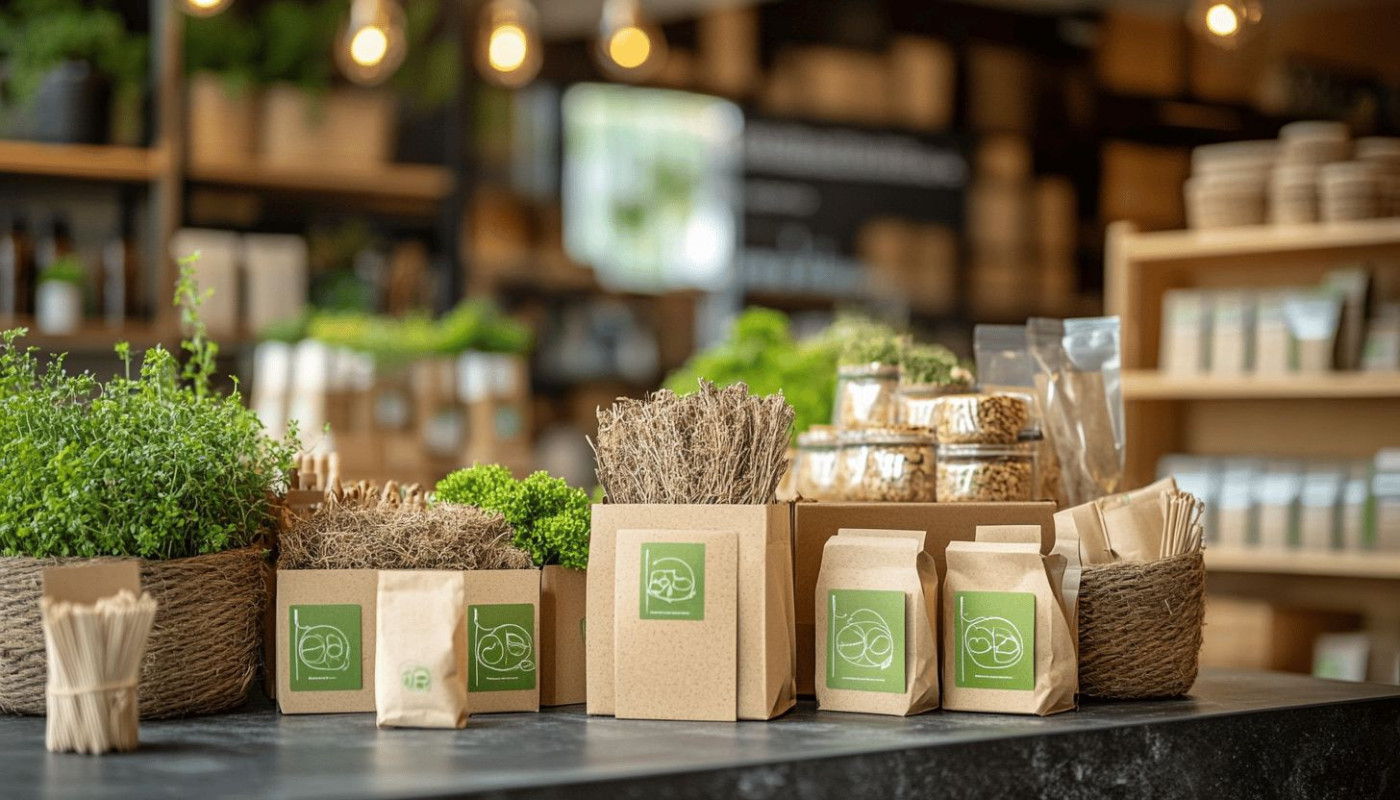Table of contents
The retail landscape is undergoing a significant transformation, driven by a heightened collective consciousness around environmental sustainability. As consumers increasingly prioritize the ecological impact of their purchases, retailers are responding with innovative approaches to packaging. This shift towards eco-friendly solutions not only reflects a growing demand for responsible consumption but also showcases a burgeoning commitment within the industry to reduce its carbon footprint. Dive into the world of sustainable packaging and discover how it's reshaping the retail experience, fostering a greener future for both businesses and customers alike.
The Environmental Imperative for Sustainable Packaging
Amidst mounting evidence of climate change and environmental degradation, the retail sector is witnessing a significant shift towards sustainable packaging. This transition is largely driven by the urgent need to reduce plastic waste, which has been clogging landfills, polluting oceans, and harming wildlife and natural habitats. Sustainable packaging often involves the use of biodegradable materials that decompose naturally without leaving harmful residues, thereby minimizing environmental impact. With consumers becoming increasingly conscious of their ecological footprint, their purchasing decisions are more and more influenced by the sustainability efforts of brands. Retailers who adopt eco-friendly packaging are not only meeting regulatory demands but also aligning with consumer awareness and preference for environmentally responsible products. This growing trend highlights the ecological benefits of choosing products with sustainable packaging, which extends far beyond the immediate convenience of use and disposal to the long-term health and well-being of our planet.
Innovation in Eco-Friendly Packaging Materials
The retail landscape is undergoing a transformative shift with the adoption of packaging innovation, particularly through the use of sustainable materials. A notable breakthrough has been the development of plant-based plastics, derived from renewable resources such as corn starch and sugarcane. Unlike conventional plastics, these bioplastics introduce a reduced carbon footprint during their production processes. Additionally, the emergence of compostable materials has provided a viable solution for packaging that harmoniously integrates into the natural decomposition cycle, thus minimizing environmental impact.
The sourcing of these materials often involves sustainable agricultural practices, ensuring that the raw inputs contribute to a circular economy. The benefits extend beyond environmental preservation, as such materials often present improved efficiency in the use of resources and energy. Embracing these innovations in the retail sector not only enhances a brand’s ecological credentials but also resonates with a growing consumer base that is environmentally conscious.
Within the context of the product lifecycle, utilizing these eco-friendly alternatives plays a pivotal role. The implementation of a life-cycle assessment (LCA) can reveal the long-term advantages, such as reduced waste in landfills and lower toxicity levels in ecosystems. By considering the entire lifespan of packaging, from raw material extraction to disposal, retailers can make informed decisions that align with sustainability goals. As the industry continues to evolve, the adoption of these groundbreaking materials is not just a fleeting trend but a stepping stone towards a greener future in retail.
Cost and Consumer Impact of Eco-friendly Packaging
Assessing the economic aspects of sustainable packaging reveals a complex interplay between initial expenditures and potential long-term savings. While eco-friendly solutions may present higher upfront costs, they often translate into significant reductions in waste management expenses. In the domain of a sustainable supply chain, these green investments not only minimize environmental impact but also enhance efficiency and resource utilization, leading to savings that could offset the initial financial output. It is essential to consider the value of sustainability when examining the cost-effective nature of these packaging alternatives.
Consumer perception plays a pivotal role in the adoption of cost-effective packaging. Shoppers are increasingly aware of their ecological footprint, often willing to pay a premium for products that align with their environmental values. This shift in consumer attitudes can make green investments more appealing to retailers seeking to meet market demands. The value of sustainability is not just in its ethical appeal, but also in its capacity to forge a deeper connection with consumers who prioritize ecological responsibility. Retailers and consumers alike are encouraged to reflect on the balance between the immediate cost of eco-friendly packaging and its long-term value, both to the environment and to the economic health of the retail sector.
The Regulatory Landscape Shaping Sustainable Packaging
Significant strides in environmental legislation have a profound impact on the retail industry, particularly concerning packaging regulations. Governments worldwide are increasingly incorporating sustainability goals into their policies, promoting practices that reduce waste and environmental impact. The shift towards eco-friendly packaging in the retail sector is largely catalyzed by such government policies, which demand adherence to stringent retail compliance standards. One technical term at the forefront of these discussions is Extended Producer Responsibility (EPR), a policy approach that holds producers accountable for the entire lifecycle of their products, including post-consumer waste. This regulatory mechanism incentivizes manufacturers and retailers to design products with minimal environmental footprints, fostering innovation in sustainable packaging solutions. As environmental legislation continues to evolve, it behooves industry stakeholders to stay abreast of new requirements to ensure they are meeting not only legal obligations but also consumer expectations for eco-conscious packaging. Vigilance in monitoring these changes is paramount for businesses aiming to align with the progressive trajectory of the regulatory landscape.
Future Trends in Sustainable Retail Packaging
As we move forward, the landscape of retail packaging is poised for transformative change, driven by advances in packaging technology and evolving consumer behavior trends. A paradigm shift towards a circular economy is on the horizon, where materials are reused and recycled perpetually, minimizing waste and environmental impact. Notably, the industry shifts are not merely reactive to regulations; they reflect a growing consciousness among businesses and consumers alike, underlining a collective commitment to sustainable initiatives.
The future of retail packaging is likely to be characterized by innovation – biodegradable materials that break down without a trace, plant-based packaging solutions grown from agriculture byproducts, and designs that are both elegant and environmentally friendly. Consumer behavior trends suggest a growing preference for products that align with eco-conscious values, pushing companies to pioneer sustainable initiatives that resonate with their customer base.
In the not-so-distant future, envision retail shelves lined with packages that tell a story of sustainability, each item's casing as conscientiously crafted as the product within. The industry's investment in this direction not only responds to market demands but also fosters a responsible stewardship of our planet's resources. As we rally behind and support these progressive movements, we collectively edge closer to a sustainable future in the retail sector, making the notion of eco-friendly packaging not an exception, but the golden standard.
Similar





